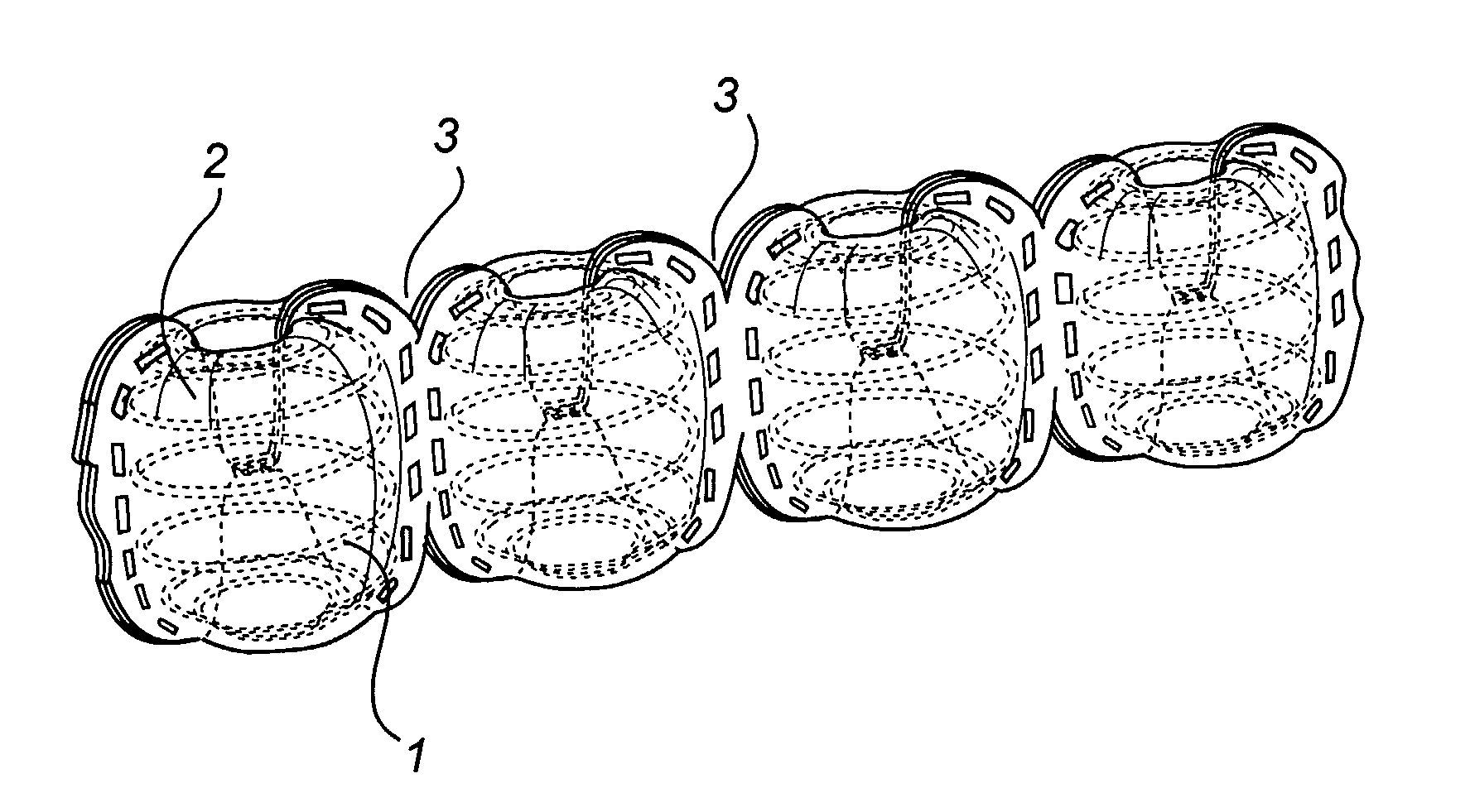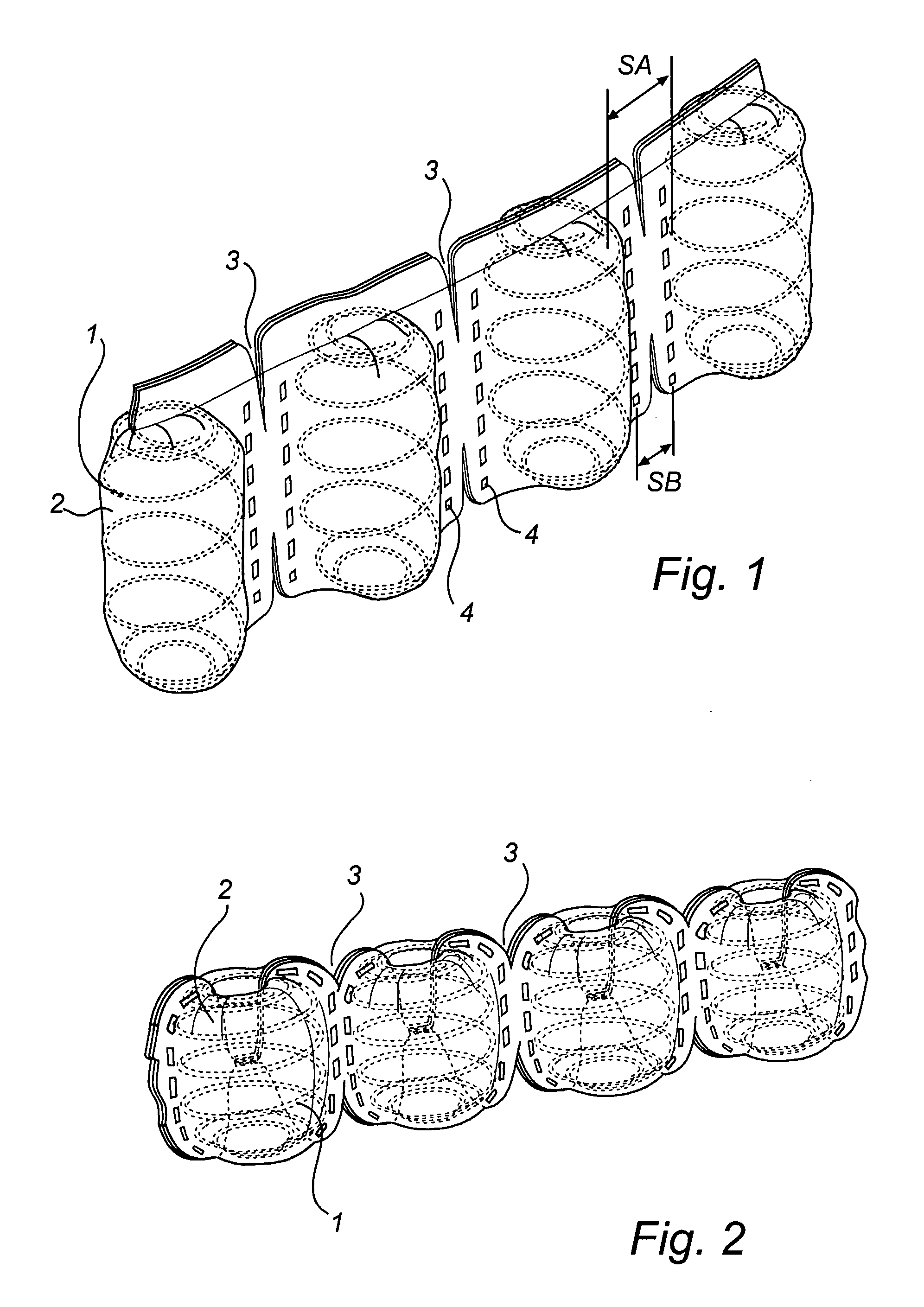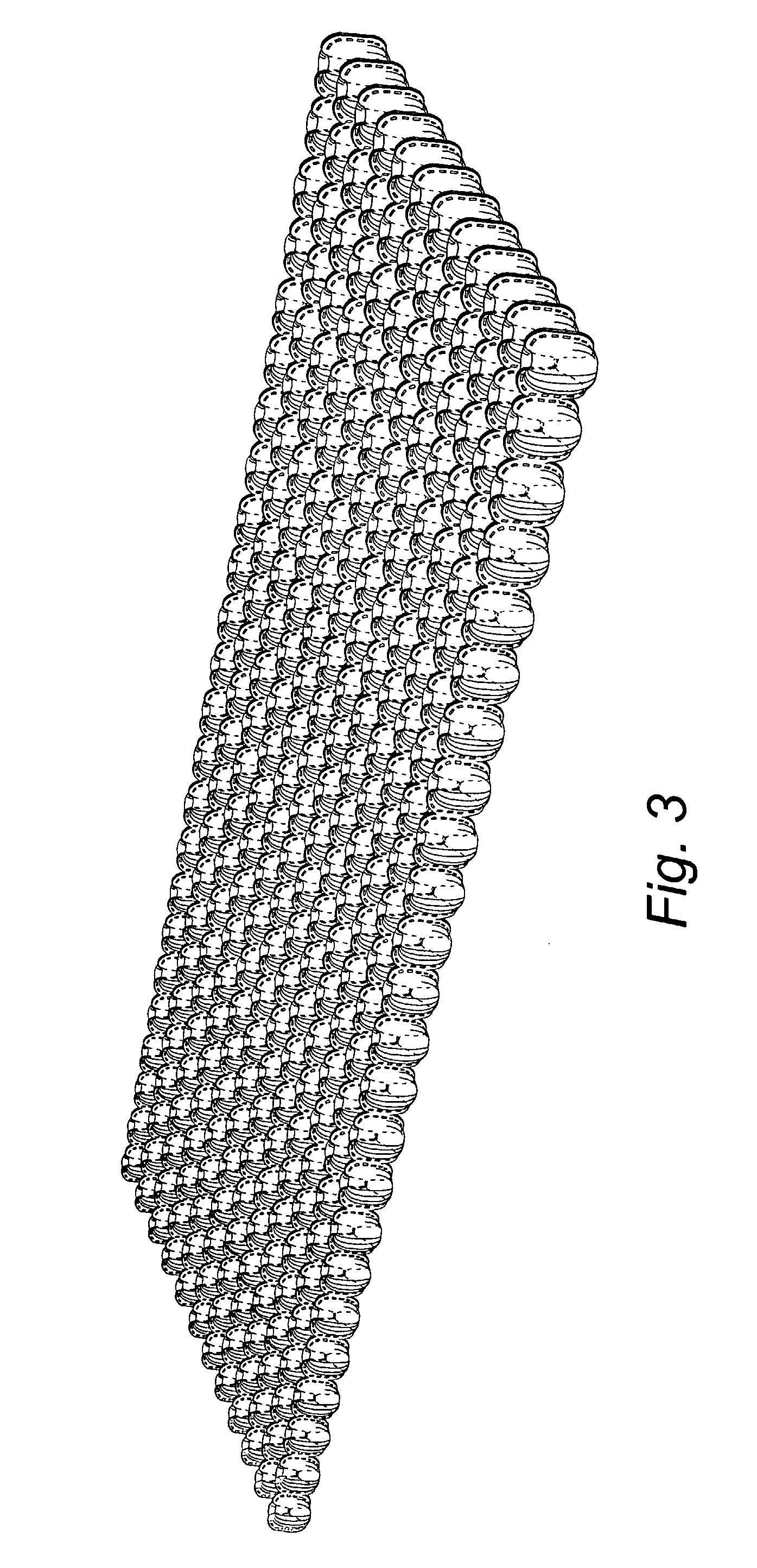End Separated Pocketed Matress as Well as Method and Device for Manufacturing the Same
a pocketed mattress and end-separated technology, which is applied in the field of spring mattresses, can solve the problems of difficult to provide thin mattresses, difficult to obtain individual spring individual resilience, and significant more expensive manufacturing than many other types of spring mattresses, and achieves simple and cost-effective, less actuation, and increased individual and independent spring resilience.
- Summary
- Abstract
- Description
- Claims
- Application Information
AI Technical Summary
Benefits of technology
Problems solved by technology
Method used
Image
Examples
Embodiment Construction
[0042] For the purpose of exemplification, the invention will now be described in more detail by way of an embodiment and with reference to the accompanying drawings.
[0043] A spring mattress according to the invention comprises a plurality of interconnected coil springs 1 enclosed in casings 2, as shown in FIGS. 1 and 2. The casing is suitably made of a, preferably weldable, textile material, but also other materials, such as different types of plastic materials, can be used. It is also possible to use non-weldable textile materials, such as cotton cloth. Such mattresses, referred to as pocket mattresses, are previously known, and therefore the manufacture thereof is not part of the present invention. Normally, strings of interconnected pocket springs in casings are manufactured automatically, after which these strings are cut in suitable lengths and joined side by side to form mattresses.
[0044] Moreover, in at least one of the sides of the mattress, preferably in both sides, slot...
PUM
| Property | Measurement | Unit |
|---|---|---|
| Fraction | aaaaa | aaaaa |
| Fraction | aaaaa | aaaaa |
| Fraction | aaaaa | aaaaa |
Abstract
Description
Claims
Application Information
 Login to View More
Login to View More - R&D
- Intellectual Property
- Life Sciences
- Materials
- Tech Scout
- Unparalleled Data Quality
- Higher Quality Content
- 60% Fewer Hallucinations
Browse by: Latest US Patents, China's latest patents, Technical Efficacy Thesaurus, Application Domain, Technology Topic, Popular Technical Reports.
© 2025 PatSnap. All rights reserved.Legal|Privacy policy|Modern Slavery Act Transparency Statement|Sitemap|About US| Contact US: help@patsnap.com



